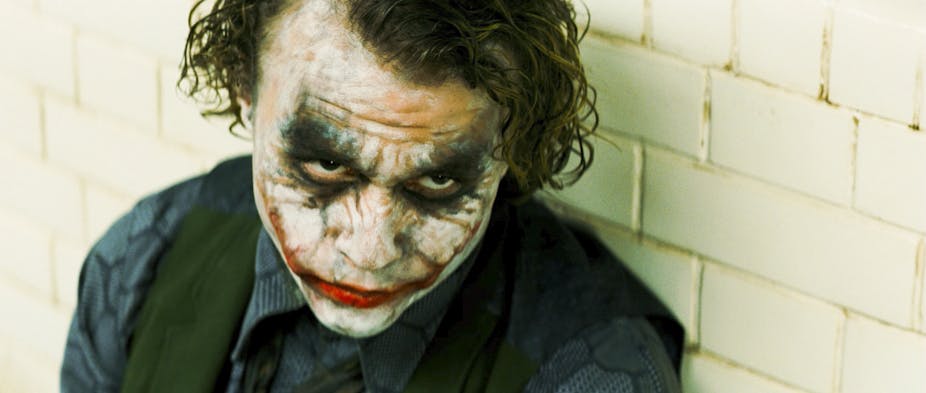What do Cruella de Vil, The Joker and Maleficent have in common? Beyond an implacable desire for evil and their cartoonish existence, they have pointy chins and a marked V shape between their arching eyebrows.
Recent research from the University of Warwick suggests this is more than an animator’s coincidence. The researchers, led by Derrick G. Watson, found evidence that downward-pointing triangles can make us feel as threatened as a negative face – which is to say, a face with an angry or brooding expression.
They did this via a series of experiments with volunteers to find out if simple geometric shapes can convey positive or negative emotions.
Many studies have revealed humans have a specific preference for symmetrical faces and can pick faces more rapidly than other shapes from a visual array.
Evidence also suggests that the emotional expression of a face can influence our processing. Negative facial expressions are identified more rapidly, and processed more, than faces with positive or neutral expressions across a range of tasks.
This makes evolutionary sense, as it’s better to notice and avoid an incoming dagger than that smothering, musty hug from your great-aunt.

More recent evidence suggests negative and positive emotions may be expressed by simple visual features. In what would seem to counteract the incessant messages we hear from the diet industry, sharp angles and “V” shapes are rated more negatively than rounded, curved shapes.
Furthermore, downward V shapes have been argued to reflect a negative [valence](http://en.wikipedia.org/wiki/Valence_/(psychology/) (intrinsic unpleasantness) that captures attention more efficiently – as faces with brows in a downward V capture more attention – and downward triangles were detected more rapidly than upwards-facing triangles.
In the case of classic villains, of course, we have both: eyebrows that are essentially upwards-facing triangles, that form a clear downward V in the middle of the brow.
In the University of Warwick study, the researchers had participants rate how positive and negative they found upward- and downward-facing triangles, compared to left/right triangles (the neutral condition). They reported that downward-facing triangles were perceived as significantly more negative than left/right triangles.
To test the capacity of downward triangles to signal threat in comparison to negative facial expressions, the Warwick researchers used an Eriksen Flanker Task. In this task, a central target image (in this case a positive or negative face) is rated as negative or positive by pressing response buttons.

In each trial, the central target image is flanked by a distractor image on either side. These distractor images can be compatible with the target image (that is, positive faces flanking a positive facial target face) and this speeds reaction times to the target image.
Distractor images that are incompatible with the target image (that is, negative faces flanking a positive target face) slow reaction times to the target image. A neutral distractor condition is also used as a basis for comparison (neutral facial expressions flanking a target face).
The researchers compared the effect of face distractors and triangle distractors using the Flanker Task. In the face condition, positive and neutral face target images were flanked by positive, negative or neutral faces.
In this condition, the researchers found negative face flankers slowed reaction times to the positive face target, but improved reaction times to the negative face target.
In the triangle condition, positive and neutral face target images were flanked by upwards-facing, downwards facing or left/right facing triangles. The researchers found identical effects in the triangle condition as they had in the face condition. That is, downward-facing triangles slowed reaction times to the positive face target, but improved reaction times to the negative face target.

So, what does all of this mean?
Well, in essence, these results suggest downward-facing triangles convey negative valence similar to that of negative facial expressions.
Such findings are intriguing, and suggest that perhaps such shapes in negative facial expressions (i.e. the furrowed brow) may greatly help drive our perceptions.
Should we be calling on the services of the plastic surgeon while busily reshaping our eyebrows? Maybe not. A smile should help allay the fears of your friends and colleagues – as long as it’s not accompanied by the maniacal laugh of the evil villain.

